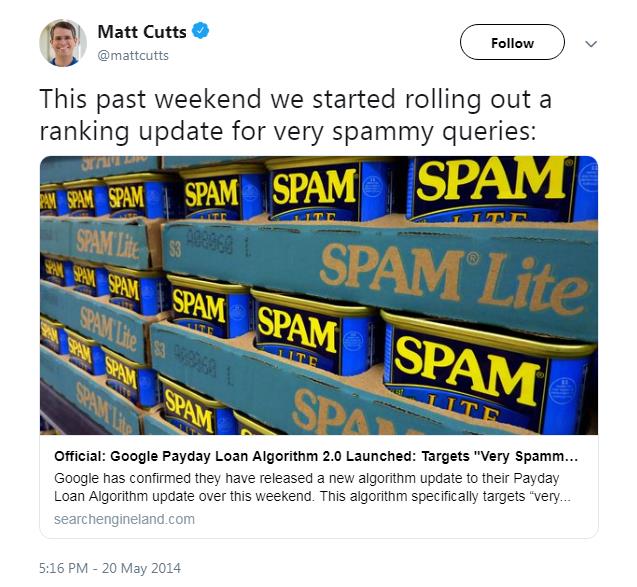Payday Loan 2.0: A Greater Focus On Spammy Queries
-

Aaron Gray
-
 April 27 , 2023
April 27 , 2023 -
 4 min read
4 min read
The Payday Loan algorithm got an update almost a year after it was first rolled out in June 2013. The filter was developed to identify websites that appeared to use spamming techniques to gain an unfair advantage in the SERPs.
What’s It For
Google has always battled against spam with Cassandra, Austin, and Penguin, to name a few. Payday Loan 2.0 targeted spammy queries that involved websites in finance, gambling, and porn industries. It was not merely a data refresh but entailed changes to the algorithm.

The developers mainly improved the technology that detected spam-heavy search requests for queries involving loans, pornography, casinos, and prescription drugs. This algorithm runs separately from other filters such as Panda and Penguin.
While Penguin 2.0 is an algorithm used for assessing a website’s backlink profile and checking whether its operator may have bought paid links, Payday Loan 2.0 focuses on deceptive black hat SEO tactics. One method involves links that are generated by hacking other sites or infecting them with malware.
What Were Its Effects
The update affected queries with a lot of potential for spam. This type of inquiry involved a substantial search volume as well as high cost-per-click or CPC keywords. Payday Loan 2.0’s reported impact was only about 0.2 percent of English searches which merely had a 0.1 difference from when the first version rolled out. However, the figure may be higher for some countries where spam is prevalent such as in Turkey or Poland.
What It Means for You
Google continually evolves to keep up with the demands and needs of its users. Before, the widespread SEO practice was to incorporate exact-match keywords for your content to be displayed for related queries. Now, though, it’s recommended to use synonyms and make sure that your key long-tail phrases blend in seamlessly to be relevant for natural language search.
To keep your website afloat even amidst the search engine’s continuous improvements to its system, you must conduct site audits regularly. Here are a few elements you should be mindful of:
- Branding Your website is the most crucial part of your branding efforts so you should make sure that the colors, font typefaces, images, videos, and even your writing style showcases your company’s personality consistently. Your About Us page must be comprehensive enough for your visitors to understand your advocacy and why they should trust your brand.
- Design The design of your site must be intuitive so that readers can easily explore other sections of your domain and responsive to the devices that your visitors are using to view your pages from. Use subtle cues such as putting essential content above the fold and contrasting colors to direct customers’ eyes to where you want them to look. Having enough white space not only gives your website a sophisticated look; it also lessens the cognitive burden of visitors and helps them process the information you presented with ease.
- Coding You must also make sure that search bots can easily crawl through the backend section of your website by cleaning up the codes and providing them with clear signals about your pages. Tag your content’s headers and subheaders appropriately as well as take advantage of a sitemap.xml and schema files to give Google a heads up on new material for faster indexing. Your site speed is crucial for user experience, and it’s also a ranking signal, so optimize your pages through image compression, browser caching, and minifying JavaScript and CSS.
-
Functionality Aside from having an attractive design, the elements you include in your website must serve a function as well. Otherwise, they’re only adding to the items that should be loaded by users’ browsers and may affect site speed.
The most basic and functional layout includes primary tabs for the Home, Contact Us and About Us pages as well as for other resources like for your company’s blog and products. You can choose to show these buttons for each page or give visitors the option to hide them in a sidebar. -
Content While all the other elements are crucial for your SEO efforts, your content is perhaps the most important. It’s the hook that captures your target audience and keeps them engaged long enough for you to persuade them about the benefits of your products and services.
Make sure that each blog post delivers high-quality information that’s free of grammatical and spelling errors. Post new articles regularly as well to boost your freshness score for relevant search queries. You can even announce your posting schedule in advance to build up the hype for new content.

